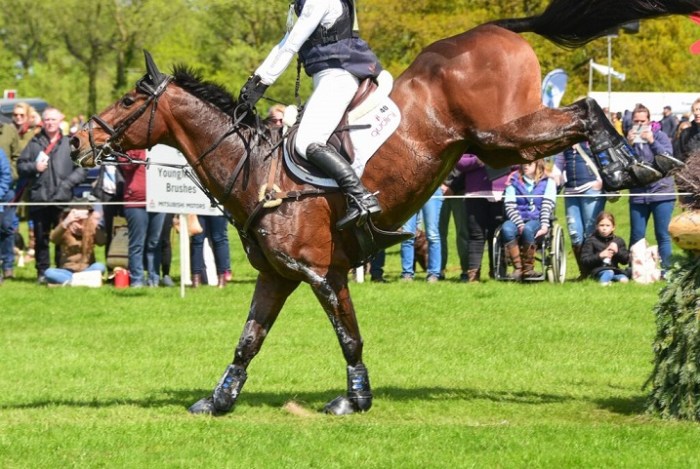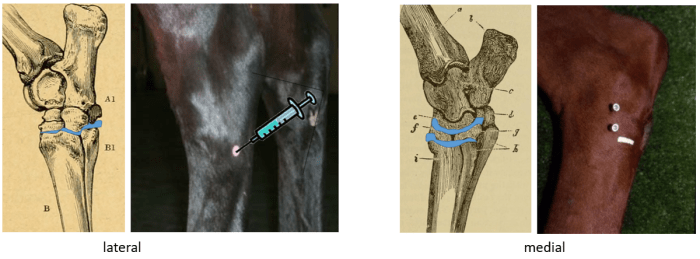Equine joint injection and regional anesthesia are invaluable techniques in equine medicine, enabling veterinarians to diagnose and manage a wide range of musculoskeletal conditions effectively. This article delves into the anatomy and physiology of equine joints, explores the various types of joint injections and regional anesthesia techniques, and provides practical guidance on their indications, techniques, and potential complications.
Equine Joint Anatomy and Physiology: Equine Joint Injection And Regional Anesthesia

Equine joints are complex structures that allow for movement and flexibility. They are composed of bone, cartilage, ligaments, tendons, and synovial fluid.
There are three main types of joints in the equine body: synovial, cartilaginous, and fibrous. Synovial joints are the most common type and are found in the limbs, spine, and pelvis. Cartilaginous joints are found in the ribs and vertebrae.
Fibrous joints are found in the skull and teeth.
Synovial joints are lined with a synovial membrane that produces synovial fluid. Synovial fluid is a thick, viscous fluid that lubricates the joint and provides nutrients to the cartilage.
Joint Injections, Equine joint injection and regional anesthesia
Joint injections are a common procedure in equine medicine. They are used to treat a variety of conditions, including arthritis, lameness, and joint pain.
There are two main types of joint injections: intra-articular injections and periarticular injections.
- Intra-articular injections are given directly into the joint space.
- Periarticular injections are given into the tissues surrounding the joint.
The type of joint injection that is used will depend on the condition being treated.
Regional Anesthesia
Regional anesthesia is a technique that is used to block pain in a specific area of the body.
There are two main types of regional anesthesia techniques: nerve blocks and epidurals.
- Nerve blocks are given by injecting a local anesthetic around a nerve.
- Epidurals are given by injecting a local anesthetic into the epidural space, which is the space around the spinal cord.
The type of regional anesthesia technique that is used will depend on the area of the body that is being treated.
Comparison of Joint Injections and Regional Anesthesia
Joint injections and regional anesthesia are both effective techniques for treating pain in horses.
Joint injections are less invasive than regional anesthesia and can be performed in a standing horse.
Regional anesthesia is more invasive than joint injections and requires the horse to be sedated or anesthetized.
The choice of which technique to use will depend on the condition being treated and the horse’s individual needs.
FAQ Resource
What is the difference between a joint injection and regional anesthesia?
Joint injections deliver medication directly into a joint space, while regional anesthesia involves injecting local anesthetics around nerves to block pain signals from a specific region of the body.
When is a joint injection indicated?
Joint injections are commonly used to treat conditions such as osteoarthritis, synovitis, and joint injuries.
What are the potential complications of regional anesthesia?
Potential complications include nerve damage, infection, and systemic toxicity.

